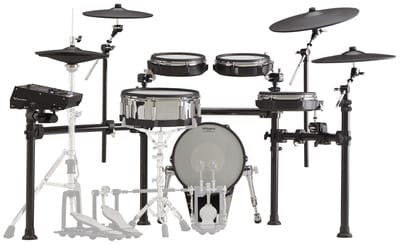Which electric drum set to buy?
If you’ve decided to buy an electronic drum kit, you’re entering a market full of options. But with all that variety comes the big question: which drum kit should you choose? What should you look for? How much should you spend? And should you go for a brand-new kit or a second-hand one?
You’ll find practical tips and helpful advice by following the links on this page and throughout the rest of the site. These will guide you through the buying process — from selecting the right kit for your skill level and space to understanding the features that really matter.
Price Differences: What Are You Really Paying For?
The difference between budget-friendly kits and high-end models comes down to several key factors:
- Materials used (especially the pads and rack)
- Sound quality and sample library
- Adjustability and customization options
- Stability during play
- Overall playability and feel
One of the most important differences in playability is the type of pads used: rubber pads vs. mesh heads.
Mesh vs. Rubber: Feel the Difference
Rubber pads are common in entry-level kits. They’re durable and affordable but offer a more rigid and less natural feel when compared to acoustic drums.
Mesh head pads, while more expensive, feel far more realistic. They provide better rebound, and because of their sensitivity, they’re more accurate in translating your playing to the module. This makes a big difference when you’re working on rolls, double strokes, paradiddles, and other dynamic patterns. Mesh pads are quieter too, which is ideal for home use.
New or Used?
Buying used electronic drums can be a great way to save money, but only if you’re confident in checking the condition of the mesh heads, cables, triggers, and module. Be sure everything functions correctly and that the kit hasn’t been overused or poorly stored.
If you prefer reliability and warranty support, a new drum kit is often the safer route — especially if you’re just getting started and want hassle-free gear.

